1.9m Telescope
This telescope was built by Grubb Parsons in 1938-48 for the Radcliffe Observatory, Pretoria. It has a 2-pier asymmetrical mounting. All observing is done with the telescope East of the polar axis; the telescope can no longer be used West of the pier.
| Cassegrain Focus: | f/18, ~6 arcsec/mm | SpUpNIC |
| Instrumentation: | GIRAFFE: Fibre-fed Echelle – currently unavailable | |
| HIPPO: Photo-polarimeter | ||
| SAAO CCD – currently unavailable | ||
| SHOC | ||
| Accessories: | Turntable, focal reducer | |
| Newtonian Focus: | f/4.85, 22.49 arcsec/mm | |
| Accessories: | Double Slide Plateholder | |
| Wynne Corrector | ||
| Finders: | 110 mm: 120 arcsec/mm, ~2 degree field | |
| 170 mm: 69 arcsec/mm, ~3/4 degree field | ||
Sky Coverage
Figure 1 shows the extent of the unvignetted visible sky when the telescope is east of the polar axis. Additional limitations apply in the case of certain instruments.
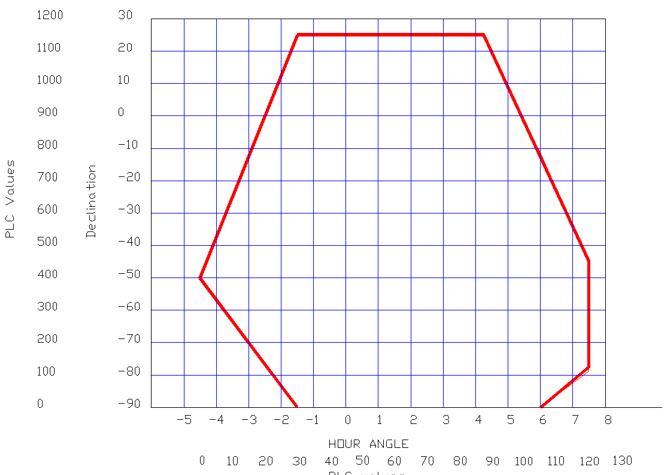
Figure 1. Observing limits for the 1.9-m telescope.
Foci and Access
Optical diagrams with relevant dimensions for the various foci are given in Figure 2. Observing with SAAO instruments is performed from the warm room. However, the Newtonian focus may be reached from a carriage which can be moved around the dome. Reaching the Cassegrain focus may require the observer to be as much as 4 m above the floor. Access is provided from a motorised x-y-z carriage whose platform is 1.42 x 1.98 m. There are also various ladders available.
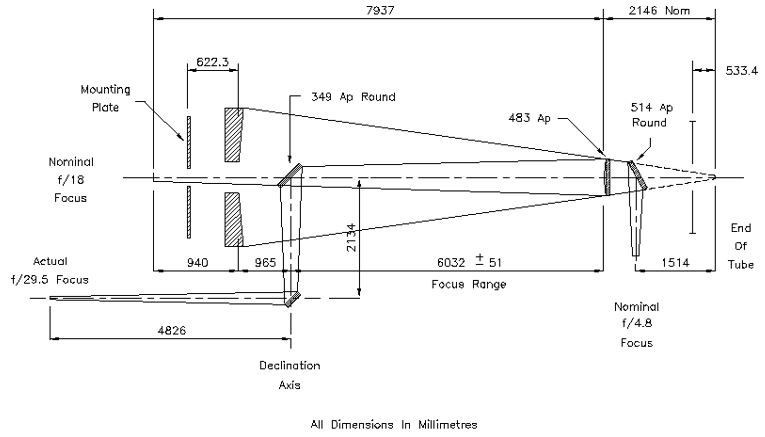 Figure 2: Optical Diagram
Figure 2: Optical Diagram
Acquisition/Guider Boxes
The acquisition box for instruments other than the grating spectrograph contains two 45° mirrors, one for offset guiding and one for rear viewing (Figure 3). These can be slid sideways pneumatically. The offset guiding mirror has an elliptical central hole with a 64 mm minor axis (giving a circular working aperture equivalent to 6.5 arcmin). The field of view for rear viewing is 4 arcmin. For autoguiding the same CCD detector is used as for acquisition, so the field of view will be the same as the acquisition TV field for the instrument in use. Stars for offset guiding should be bright enough to appear in the Hubble Guide Star Catalog, and must be located between 3′ and 7′ from the optical center. Difficulty in autoguiding may be experienced with stars brighter than 9th magnitude. A facility to mount a TV camera at the rear view focus is provided. There are bolt circles for attaching instruments to this acquisition box, as can be seen in Figure 4.
A similar acquisition/guider box (without rear viewing) is built into the spectrograph. The annulus for autoguiding is the same as given above.
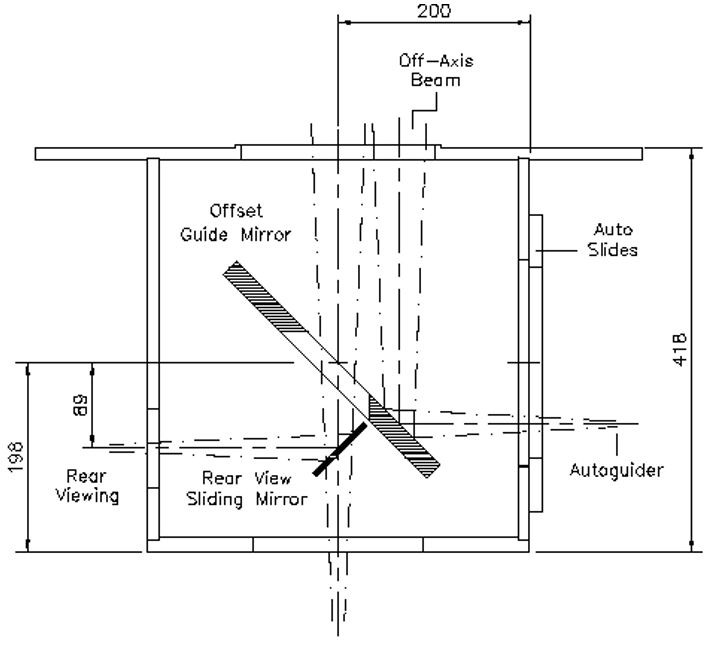
Figure 3. Acquisition/Guider box.
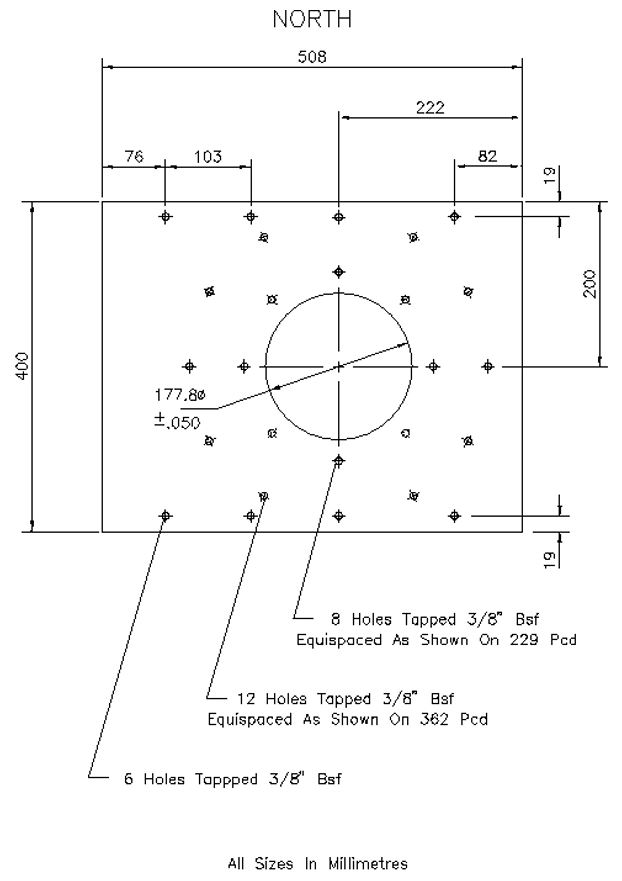
Figure 4. Acquisition box mount plate.
Acquisition & Autoguider Camera
The acquisition cameras/auto-guiders for the 1.9-m and 1.0-m telescopes at SAAO use 385 x 288 dye-coated EEV CCDs and are operated via transputer-based controllers. They have a broad wavelength response from roughly 0.35 to 1.0 µm with a peak around 0.7 µm.
Focal reducers for f/18 enable the acquisition camera to be used with the spectrograph on the 1.9-m telescope. The image scale is approximately 0.5 arcsec/pixel on both telescopes. Findercharts of 8×8 arcmin are appropriate.
For direct imaging using the SAAO CCD and UCT CCD, the acquisition cameras can be used together with the acquisition box and XY-slides. The spectrograph does not use the acquisition box.
Control Systems
There are separate drives for quick and slow motions on each axis. The R.A. fast drive is continuously variable; the declination fast motion utilises a two-speed motor.
The following slow-motion speeds are available:
R.A. set/guide 0 to 59.9999 arcsec/sec
R.A. trail 0 to 9.9999 arcsec/sec offset from track
R.A. track 0 to 29.9999 arcsec/sec
Dec. set/guide 0 to 39.9999 arcsec/sec
Observers wishing to use “trail” will need to arrange for the use of one of the “old” handsets.
Visitor Instrumentation
Special equipment is often difficult to mount and enquiries should be made well in advance. A special Cassegrain instrument mounting flange has been manufactured to accommodate instruments of up to 250 kg or less, with a versatile system of counterweights. Bolt circles are as shown in Figure 5. Figure 6 shows the filter box mount plate.
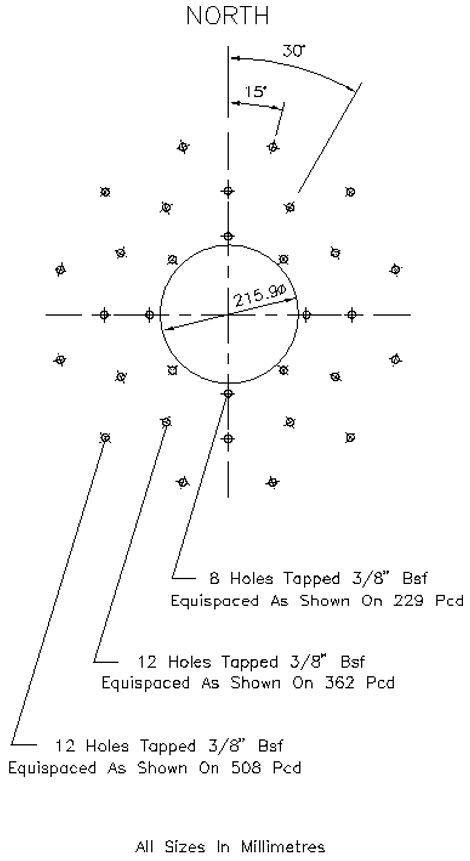
Figure 5. Cassegrain small instrument adaptor.
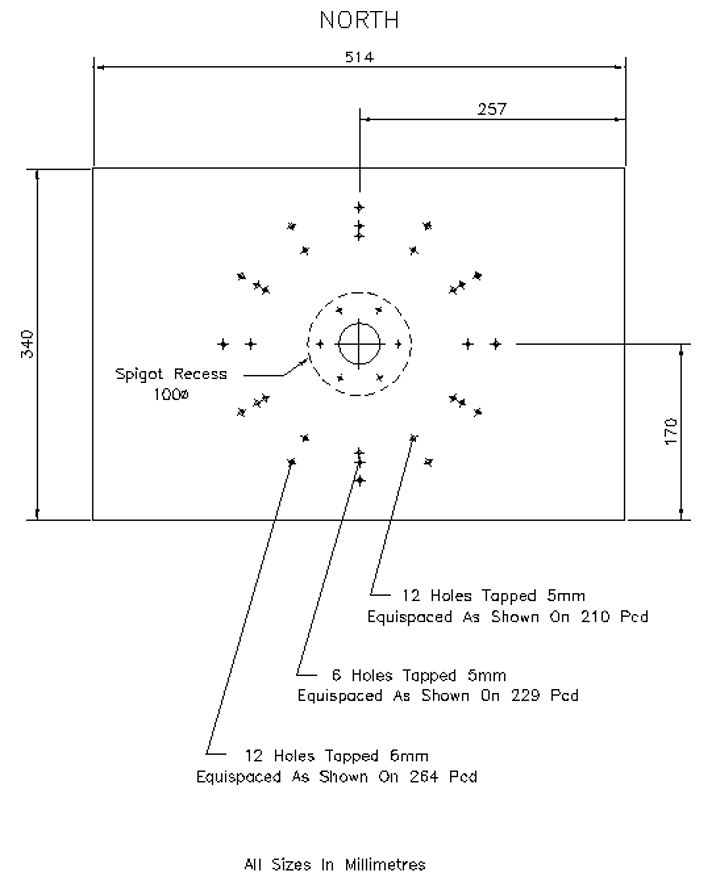
Figure 6. Filter box mount plate.
1.0m Telescope
The 1.0-m telescope was built by Grubb Parsons in 1964 and erected originally in Cape Town. At the time of the move to Sutherland, the Cassegrain f-ratio was changed from f/20 to f/16. See the optical diagram in Figure 1 for the relevant dimensions.
| Cassegrain Focus: | f/16, ~12.94 arcsec/mm (CCD) |
| Instrumentation | SHOC SAAO CCD |
| Accessories | Offset-guider and acquisition box Autoguider |
| Baffle System | 8′ Diameter unobstructed field at Cassegrain |
| Finder | 100 mm f/10 refractor |
Figure 1: Optical diagram of the 1.0-m telescope.
Sky Coverage
The design of the telescope and its building limit the view of the sky somewhat. The following are approximate observing limits for the 1.0-m telescope on the east side of the pier. The eastern limits are set by the south pier at -80° and the prime focus carriage at all other declinations.
Acquisition & Autoguider Camera
Use of the acquisition camera and autoguider is described in the TCS manual, which also contains instructions for the selection of guide stars. Findercharts of 8×8 arcmin are appropriate.
Visitors’ Instrumentation
There are practical limitations on the equipment that can be mounted on the telescope. The unvignetted field is about 34.5 arcmin (160 mm), but if the acquisition and guidance box is used this reduces it to 12 arcmin (55 mm). The focus can only be moved from 250 mm behind the mounting plate to 950 mm behind it, or if the guider box is used, from 0 mm to 530 mm. The instrument may weigh up to 150 kg. It may be possible to carry heavier equipment but SAAO should be consulted at an early stage. The equipment should not be longer than 1500 mm. Note that long, bulky equipment severely restricts the observing limits of the telescope. Cables for visitors’ own equipment should be about 12 m long to drape over the telescope and reach the floor. The warm room is about 5 m away when the telescope is on the east side of the pier.
The acquisition and guidance box (Figure 2) is identical to that on the 1.9-m telescope. The mounting hole positions for the Cassegrain small instrument adaptor are the same as those for the two inner rings on the 1.9-m Cassegrain small instrument adaptor.
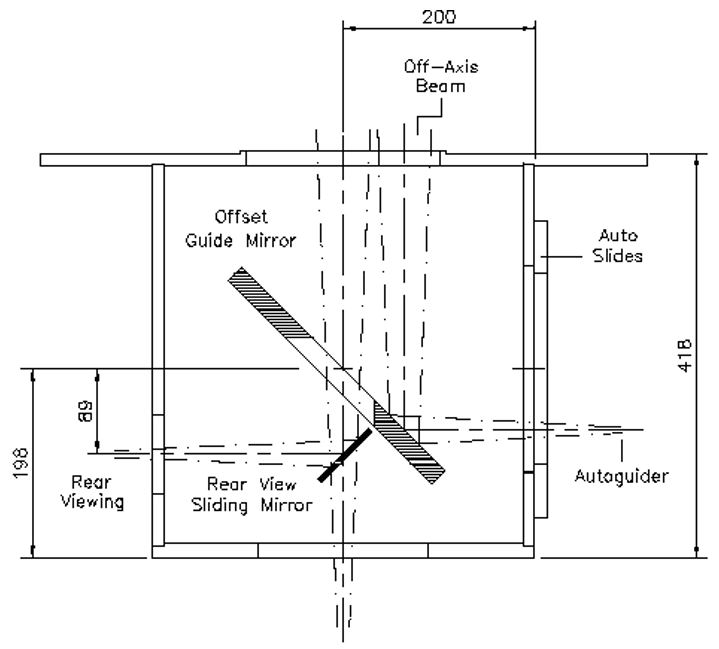
Figure 2: Optical Diagram
Lesedi
SAAO is currently commissioning a new 1-metre alt-az telescope for use by the local and international astronomical community. The telescope has been named Lesedi – meaning light or enlightenment in Sesotho – a name selected from competition entries submitted by South Africa’s Grade 6-12 learners. The telescope will be offered for traditional observing proposals in week-long blocks, as well as service applications, in due course.
The telescope has two identical Nasmyth foci, with high throughput down to UV wavelengths. A custom-made wide-field camera – designed and built at SAAO – is currently being developed to exploit the widest field-of-view of any of our telescopes. In the interim period, a SHOC instrument with UBVRI and clear filters will be offered. SHOC has a field-of-view of 5.7×5.7 arcmin2 on Lesedi. The telescope’s basic parameters are given in the Table below.
Calls for proposals will be announced on the web page and by email to our usual mailing list once commissioning is complete.
| Nasmyth focus | f/8, 25.8 arcsec/mm |
| Field of view | 42.9′ diameter |
| Current Instrumentation | SHOC (UBVRI+clear) – FOV: 5.7×5.7 arcmin2 |
| Future Instrumentation | WiNCam (Wide-field Nasmyth Camera) – FOV: ~40×40 arcmin2 Low-resolution Spectrograph – specification TBD |
| Accessories | Autoguider on each Nasmyth port |
—
Southern African Large Telescope
The Southern African Large Telescope (SALT) is the largest single optical telescope in the southern hemisphere and among the largest in the world. It has a hexagonal primary mirror array 11 metres across, comprising 91 individual 1m hexagonal mirrors. Although very similar to the Hobby-Eberly Telescope (HET) in Texas, SALT has a redesigned optical system resulting in a larger field of view and effective collecting area.
SALT can detect the light from faint or distant objects in the Universe, a billion times too faint to be seen with the unaided eye – as faint as a candle flame would appear at the distance of the moon. The telescope and instruments are designed to operate from the near ultraviolet to the near infrared (320 to 1700 nm), and offer some unique or rare capabilities on a telescope of this size.
SALT is situated at the South African Astronomical Observatory (SAAO) field station near the small town of Sutherland, in the Northern Cape province, and is ~380 km from Cape Town. SALT is funded by a consortium of international partners from South Africa, the United States, Germany, Poland, India, the United Kingdom and New Zealand. The construction phase was completed at the end of 2005 and from 2006 to 2009 it entered a period of commissioning and performance verification. Since September 2011, observing is now in full swing and the telescope is finally realising its huge potential as Africa’s Giant Eye on the Universe.
